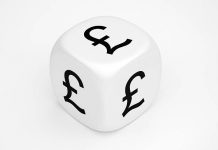Personal income rose 0.3% in December, in line with consensus. Removing inflation and taxes, real disposable income rose 0.1% on the month.
Americans were clearly in a spending mood to end 2016, with consumption up 0.5%, also as expected. That marked an acceleration from the previous two months.
In real terms spending rose a decent 0.3%, following a 0.1% gain in November. Spending gains were concentrated on durable goods, which jumped 1,.4% on the month. Services spending was solid at 0.3% for the second consecutive month.
The combination of higher spending and more modest income gains saw the savings rate decline further to 5.4%. The personal saving rate trended down over the course of 2016, after creeping up through 2015.
Inflation, as measured by the year-on-year change in the personal consumption deflator, ticked up to 1.6%, from 1.4% in November. Core PCE inflation (ex food & energy) held steady at 1.7%, roughly where it has been for most of 2016.
Key Implications
Today’s solid report provides a nice handoff for consumer spending growth heading into 2017. U.S. consumers drove growth in the fourth quarter, and we expect that momentum to be sustained in in the first quarter of 2017.
Consumers have been working down their savings buffers accumulated since the fall in energy prices, but the saving rate is not unduly low. We expect income growth to pick up in the months ahead reflecting robust wage and employment gains, providing a solid foundation for consumer spending.
Later this week we will hear from the FOMC. While the Fed does expect that a hotter economy will lift core price pressures in the coming months, so far in 2016 core inflation has remained fairly steady. That should enable the Fed to wait patiently on the sidelines until the second quarter, before taking rates another step higher.












